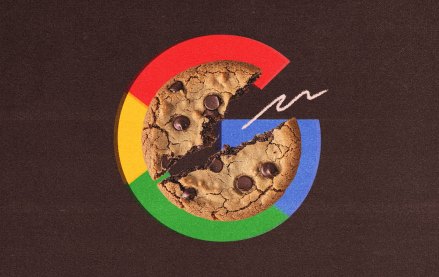
Sanofi is playing eco-detective to sniff out just how green its advertising really is.
And no, this doesn’t sound like the usual corporate green spiel; the pharmaceutical giant appears to be actually strapping in for the heavy lifting in cutting emissions.
Prasad Sridhar, Sanofi’s head of media, spells it out: marketers there are doing more than just adding up the carbon emissions of its advertising, it’s setting sights on actively reducing them too, he said.
It’s a hefty dual task — precise carbon accounting and aggressive emission reduction, all within a year. And yet, Sridhar’s confidence isn’t unfounded. Sanofi’s experiments last year, targeting emission reductions in specific ad sectors like programmatic and YouTube ads in Australia and England, were eye-opening.
Leveraging these insights, particularly from its programmatic buying, Sanofi fine-tuned its approach. The result? A 30% drop in CO2 emissions from those ads, boosting performance rather than hindering it. Some of these reductions came from identifying and eliminating carbon-intensive, low-efficiency sites, often those created specifically for advertising purposes. Sridhar’s take: cutting emissions isn’t just good for the planet, it’s great for business too.
While this might seem a small victory in the larger picture — since Sanofi’s open market programmatic advertising footprint is limited — it’s a crucial step closer toward a sustainable media plan. The next step in their journey is the use of a carbon calculator. This tool, as Sridhar explained, is pivotal for Sanofi’s dive into the deeper end of global carbon reduction.
Developed in partnership with digital ad agency Jellyfish and Scope3, the carbon calculator will be used to measure the carbon emissions from all Sanofi Consumer Healthcare brands across eight major advertising channels in 35 key markets, which make up 97% of its media spend.
“We’re not just going to be measuring the carbon emissions of this advertising in 2024, we’re also going to be making reductions where we can,” said Sridhar.
This will start with the ads bought through Google’s ad buying tech DV360 and Meta. Sanofi received self-reported data from them both at the end of the previous year and plans to review all the information in the first quarter to decide on specific emission reductions. The same meticulous process will be applied to TikTok by the end of the month. Beyond the number of impressions, Sanofi’s marketers are also tracking every other detail: URLs, network type, device, timestamps, and more.
Eventually, all this data will be used to help Sridhar and his team to more informed decisions about what areas of media buys should be axed because they’re neither sustainable nor performative. Scope3 is currently integrating a so-called “benchmark” dimension to Sanofi’s carbon calculator to help do just that by allowing Sanofi’s marketers to compare the carbon produced by the number of impressions sold market by market.
“When we can get high performance, low carbon then the plan is to invest, and cut when we get low performance, high carbon,” said Sridhar.
However, these comments are more of an aspirational goal than an absolute commitment. There will be situations where avoiding high-carbon-emitting media owners is not feasible. When they happen, Sanofi plans to counterbalance these emissions by contributing to broader offsetting initiatives.
“Of course, we want to reduce carbon but we also need to maintain our performance so it needs to be balanced in both ways,” Sridhar. “Like so many other advertisers these days, we’re thinking about how we can still deliver our brand objectives through media in a responsible way.
Sometimes this will be easier said than done. It demands Sanofi’s media team to confront some hard truths, especially in programmatic advertising. So far they seem to be doing just that, said Sridhar. They’re facing up to the fact that low-cost advertising options they’ve been buying might be less effective than they appear, challenging the very foundation of their attribution model. It’s a tough pill to swallow but a necessary step toward aligning their advertising strategy with quality, efficiency, and sustainability.
“We’ve learned that MFAs contribute to 20% of the carbon [emissions] of the total media we buy in programmatic advertising,” said Sridhar. “Ideally, we’d like to find a way to use that information to cut hundreds of publishers from the thousands that we buy from. The measurement we’re doing is going to give us the insights on where to focus those reductions.”
But the cuts might not stop there. Sanofi may soon target carbon-heavy ad tech vendors, not just media owners. In an interesting twist, the same consolidation efforts that have been challenging for advertisers like Sanofi for financial, transparency, or privacy reasons could get a boost from for a greater cause: saving the planet.
“If we’re going to do this properly then we have to think about metrics like cpms and whether they’re going to be the right things to look at when understanding the impact of carbon emission reductions because they’re going to be higher,” said Sridhar.
This would throw up all sorts of questions, he continued. Does Sanofi go for high-quality CPMs instead of the usual ones? What about favoring skippable ads on YouTube over the stickier kind, especially if it’s not convinced that just watching an ad translates to real customer sentiment?” These choices could shake up everything from the creative angle to targeting specific devices. And speaking of targeting, it could tweak its approach to reaching folks on Wi-Fi instead of those using 4G? Ultimately, this is about doing more to connect media metrics with brand metrics.
It takes a lot to get to this point — where Sanofi’s media boss is talking about making wholesale changes to how it buys ads and from whom. It demands more than just a nod from the cmo; it requires a deep, sustained commitment from the C-suite as well as the marketing team to elevate this from a mere experiment to a fundamental shift.
Expect more advertisers to be making this sorts of moves this year. Sustainability standards are coming for digital advertising, and for many marketers it’s long overdue.
“We’re working with the Global Alliance for Responsible Media (GARM) to try to have a common methodology on how we measure our carbon footprint of our media plans,” Danone’s global head of media and brand communications, Catherine Lautier, who is part of the World Federation of Advertsier’s media board as well as its executive council. “This is essential work.”
More in Media

Media Briefing: Efforts to diversify workforces stall for some publishers
A third of the nine publishers that have released workforce demographic reports in the past year haven’t moved the needle on the overall diversity of their companies, according to the annual reports that are tracked by Digiday.

Creators are left wanting more from Spotify’s push to video
The streaming service will have to step up certain features in order to shift people toward video podcasts on its app.

Digiday+ Research: Publishers expected Google to keep cookies, but they’re moving on anyway
Publishers saw this change of heart coming. But it’s not changing their own plans to move away from tracking consumers using third-party cookies.





